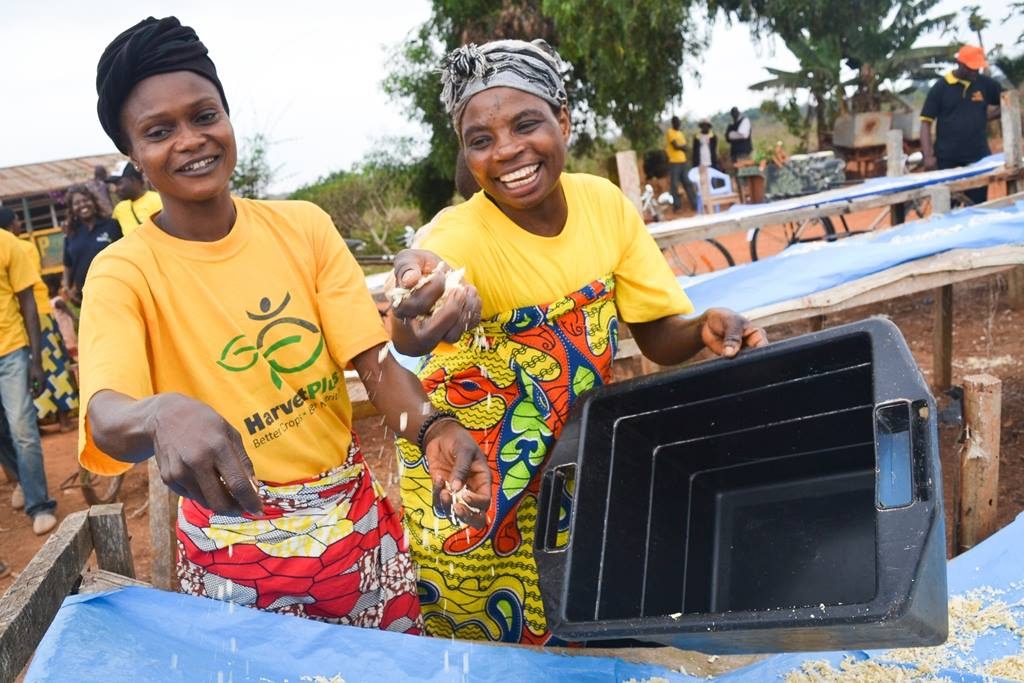Biofortification: a new way to address malnutrition

A year ago I had the honor of participating in the launch of a policy brief by the Global Panel on Agriculture and Food Systems for Nutrition: “Biofortification: An Agricultural Investment for Nutrition”. This paper described how biofortification – the process of enriching staple food crops with important vitamins and minerals – offers a way to reach low-income rural consumers who have limited access to micronutrient-rich diets, food supplements or commercially fortified processed foods. The Global Panel’s expert report catalyzed a dialogue about how to accelerate adoption of these health-giving foods. What has happened in the year since the report was launched? What lies ahead?
How does biofortification work?
For decades, an international non-profit research network, the CGIAR, has worked around the world to improve plant breeding to enable farmers in developing countries to grow crops that are high-yielding and resistant to diseases, pests, heat, and drought. About 20 years ago, I and other researchers posed the question of whether nutrition could feasibly be included as a breeding trait. This was prompted by the realization that an increased yield in crops like rice, wheat, maize, cassava and other staples had increased the amount of food that low-income farming families relied on for their daily sustenance, but micronutrient malnutrition still undermined their health. Indeed, two billion people worldwide still suffer from this “hidden hunger.” Micronutrient malnutrition is also associated with the rapidly growing problem of obesity and non-communicable diseases due to diets based on highly processed, nutrient-poor foods. In response, biofortification has harnessed conventional crop breeding techniques to identify varieties with high concentrations of nutrients like vitamin A, iron, and zinc, which are vital to the health and brain development of young children, women, and other vulnerable populations. As the Global Panel’s report on biofortification correctly notes, food fortification, supplementation, and improved dietary quality all remain important complementary interventions. Biofortification’s role is to target the rural poor with a food-based approach.
Biofortification today
I lead HarvestPlus, a non-profit global agricultural research organization that pioneered this innovative approach. Thanks to the generosity of donors, the ingenuity of researchers, the commitment of policymakers, and the dedication of dozens of partners around the world, we now have clear evidence that biofortification is effective. New data demonstrate that children who eat vitamin A sweet potato are less prone to diarrhoea, the second-leading cause of preventable childhood deaths. Iron deficiency is completely reversed in children who eat bread made from high-iron pearl millet. Food security is also enhanced as these nutrient-dense crops are as high, or in some cases higher, yielding than comparable non-biofortified varieties. Progress is accelerating. When the Global Panel issued its report last year, 10 million people were growing and eating biofortified crops. Today it’s at least 15 million in more than 30 countries in Africa, Asia and Latin America, with crops being evaluated in more than 20 additional countries. Minsters of agriculture and health in countries like Nigeria, Rwanda, Bangladesh, India and Brazil have actively promoted adoption. For crops for which hybrid seeds are available like maize, private companies are beginning to produce and sell their own hybrid varieties; flour enriched with vitamin A is also being marketed. More donors are investing in biofortification, including the World Bank, which was an early funder of the research that underlies today’s successes, and is now funding countries directly to scale up this intervention at the request of governments convinced of its impact and cost-effectiveness.
What’s next?
These trends are encouraging, but we won’t reach the hundreds of millions of people who could benefit from biofortification without greater investment and focused action. Here’s what’s needed to scale up globally:
Funding: International financial institutions, bilateral donors, and developing countries must dedicate greater resources to accelerate access. Biofortification needs to be included in national budgets for agricultural development, health, and even education, since better nutrition promotes cognitive development and therefore the ability to learn. Countries as a whole will reap the rewards over the long term, thanks to both improved productivity and healthier populations.
Supportive policies: Governments need to integrate biofortification into national agriculture and health strategies, university curricula, agricultural extension and school feeding programmes, ante-and post-natal counseling, and other relevant programmes. The World Food Programme’s Purchase for Progress initiative has begun buying biofortified crops from smallholder farmers. Other procurement programmes should follow suit.
Crop breeding: The CGIAR has committed to mainstream nutrition in all of its plant breeding programmes. Donors that fund this research and national agricultural research systems that adapt crops for local conditions need to demand crop varieties that are higher in quality as well as quantity. The private sector should commit to producing these improved varieties, ensuring that the seeds they sell are nutrient-rich. Seed multiplication can also be a bottleneck; production of biofortified varieties already released needs to be expanded and accelerated.
Development programmes: Non-profit organizations like World Vision, which works in almost 100 countries, are now including biofortification in their agricultural development and maternal and child health projects. Other non-profits, such as Mercy Corps, BRAC, and Self Help Africa, are doing the same. These implementing partners and their host governments need technical assistance and knowledge transfer to enable them to bring these programmes to scale and to ensure sufficient supplies to meet growing demand.
And let’s not forget the farmers themselves who are ultimately responsible for making biofortification grow, literally and figuratively. We applaud the early adopters who made the decision to try something new, in the hope that it would make their families and communities healthier and more prosperous. By setting the example, spreading the word, and sharing planting material with their neighbours, these farmers – many of them mothers of young children – have turned a technological breakthrough into a new way of life. Let’s work together to make sure that biofortification can reach all who need this proven innovation.
